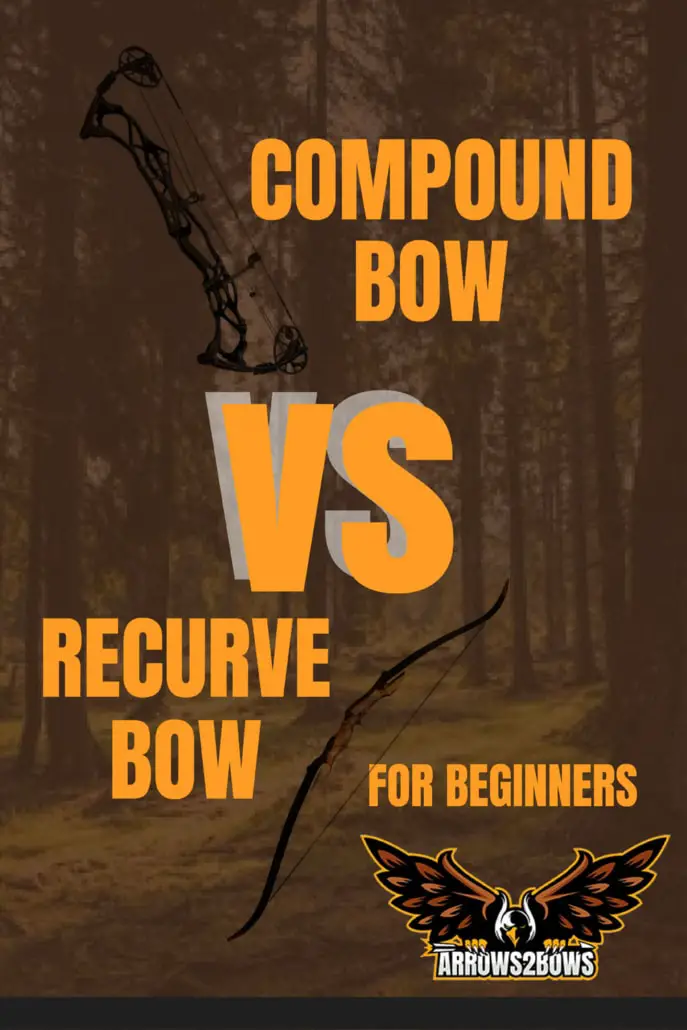Compound Bow vs Recurve Bow for Beginners
It’s easy to fall in love with archery. One of the fastest growing sports in the world, more than 23 million people in the United States alone participate in archery each year. Some choose to use their archery skills for hunting, others for competition, and others just for fun.
If you’ve been thinking about joining the growing archery trend, you first have to choose a bow. If you’re a complete archery novice, the options may be confusing, and you probably have a ton of questions.
If you’ve spent time browsing the archery sections of your local sporting goods store or favorite website, you’ve probably noticed two distinct types of bows. These bows are referred to as recurve bows and compound bows.
Recurve and compound bows serve the same general purpose – to launch arrows downrange. However, these two bows could not be more different.
Let’s take a look at how these two popular bows work and what makes them different. We’ll also discuss the pros and cons of each type to help you decide which style will work best for you.
Recurve Bows
The basic recurve bow has been around for thousands of years. Our ancient ancestors used the design for both hunting and warfare. The recurve bow also appears in mythology and legends.
If you’re having trouble picturing what a recurve bow looks like, Robin Hood used a one to win the Golden Arrow in the legendary archery contest sponsored by the Sheriff of Nottingham.
You can identify a recurve bow by the clear curve that sweeps back toward the archer and then re-curves back toward the front of the bow. When the bow is unstrung, the tips curve away from the archer. These curved tips help generate power, increase arrow speed, and help make the release smoother.
The relatively primitive design is uncomplicated, but effective. Large recurves can drive arrows several hundred yards in a loping arc.
Modern recurve bows have come a long way since our ancient ancestors first fashioned them from wood and animal sinew. Modern recurves are incredibly precise when held in competent hands.
Recurve bows are the only type of bow used in Olympic competition, where adult archers make precision 70-meter shots. While the recurves used in Olympic competition are outfitted with modern high-tech hardware, like sights, clickers, lengthy stabilizers, and arrow rests, these bows still have their roots in the crude weapons used by the earliest humans.
Advantages of Recurve Bows
The simple, uncomplicated design of the traditional recurve has plenty of advantages. First, they are light and easy to carry.
Many designs even break down to make them even easier to pack and transport. These take apart recurves are called takedown bows. Consisting of a riser, two limbs, and a string, a takedown bow can be assembled and disassembled quickly and easily with no special tools. The convenience and easy packability of takedown bows make them a popular choice for backpackers and survivalists.
The simple design of the recurve bow is a major advantage in the field. With few moving or complex parts, there are fewer things that can go wrong with the weapon. There are no cams or pulleys to break or maintain. In fact, recurve bows require very little maintenance.
Their primitive design also makes recurve bows more durable than complex compounds. A recurve can survive being dropped, bumped, banged, and even dragged through the mud without damaging any essential moving parts.
Disadvantages of Recurve Bows
Despite their simple design, recurve bows can be much harder to master than a compound bow. It can take hours upon hours of practice before you can even begin to reach proficiency with a recurve.
Drawing a recurve bow also takes some serious upper body strength. Most adult recurve bows require anywhere from 20 to 50 pounds of force to draw fully. Inexperienced shooters often tire quickly, so you may want to hit the gym if you want to shoot a recurve. It can take some time to build up the necessary muscles to draw and shoot the number of arrows required for competition.
Recurve bows also do not have mechanical components to help them generate arrow speed, making them less powerful than a compound bow. This can be a major disadvantage for hunters. Getting close enough to game animals to drive an arrow deep enough to hit vital organs isn’t particularly easy.
Compound Bows
Compound bows are the modern, high-tech cousins of the traditional recurve. A popular choice for both hunting and target shooting, compound bows use a system of cables and pulleys to generate more power and speed.
Modern compounds are made of modern materials. While it is still possible to find recurve bows made from traditional wood, compound bows are typically made from carbon fiber, fiberglass-based composite materials, and metal alloys.
Advantages of a Compound Bow
Although the pulleys and cables of a compound bow are fairly complex, new archers shouldn’t be intimidated. Compound bows are actually more forgiving than recurve bows (thanks to their increased arrow speeds/. This makes them easier to shoot accurately, especially for beginners.
Compound bows also require less upper body strength to shoot. Many models even allow you to adjust the bow’s draw weight up or down. This feature allows you to set the draw weight to match your physical strength. It also makes it easy to increase the draw weight as you practice and strengthen the muscles used to draw your bow.
One major advantage of that complex cam and cable system is something called let-off. Let-off is a reduction in draw weight that occurs between 1⁄2 to 2⁄3 of the way through the draw cycle. Once you reach the let-off point, the bow becomes much easier to draw. This feature also makes it easier to hold the draw longer, which can be a serious advantage for bowhunters who often have to hold their draw until an animal presents a good shot.
Compound bows can shoot further and more accurately than their primitive recurve relatives. The faster arrow speed these rigs generate also means they can drive arrows deeper into targets. This is another major advantage for hunters who rely on arrow penetration to reach vital organs. And that extended effective range means hunters don’t have to get quite as close to wary game to make an effective shot.
Disadvantages of a Compound Bow
The mechanical nature of a compound bow makes it heavier than a regular recurve. This can be tiring if you have to lug your gear over rough hunting terrain or around a large target course.
Those mechanics also make compound bows more expensive than any other type of bow.
Compound bows are much more complex than recurves and therefore require more regular maintenance. You may need a professional to help with some of that maintenance. Replacing strings, cams, and other components sometimes requires expertise and special equipment like a bow press.
Some more complex compound bows can require special tuning to make sure the cam system works properly. If the timing of cam rotation is off even just a little, it can have a serious effect on your shooting accuracy.
The complexity of compound bows also means there are more things that can go wrong in the field. Bumps and drops can bend cams or throw off the timing. If you use your bow for outdoor shooting, dirt and mud can gum up moving components and hinder your ability to shoot.
Dry firing (shooting a bow without having an arrow in place) is also a major concern for archers who use a compound bow. Due to the greater amount of energy stored and released by a compound bow, dry firing is more likely to result in severe damage. It could even destroy the bow entirely.
Which Should I Choose?
Both recurve and compound bows are fun to shoot. However, the type of archery activities you want to pursue will influence what type of bow you should choose.
Recurve bows are best for:
- Those interested in the traditional and historical aspects of archery
- Shooters who prefer a challenge
- Backpackers and survivalists
- Olympic hopefuls
- Recreational shooters who want to keep things simple
- Archers on a budget
Compound bows are best for:
- Beginners
- Bowhunting
- High-tech gear junkies
- Long range targets
Final Thoughts
There is a lot to consider before jumping into the archery world. The first decision you’ll need to make is what type of bow you want to shoot.
Although recurve and compound bows serve the same general purpose (to shoot arrows), they have many fundamental differences. They each have their own strengths and weaknesses, and which one is best for you depends on personal preference and how you plan to use your bow.
Whether you prefer the primitive power of a traditional recurve or the technology and precision of a modern compound, both are just plain fun to shoot.




